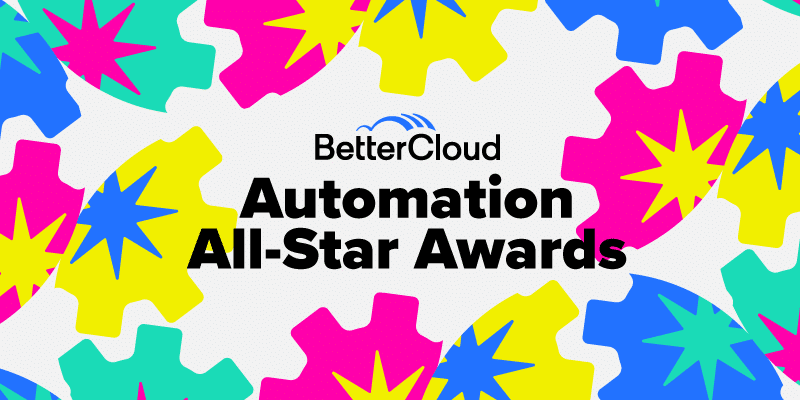The Best IT Advice I Ever Received
May 18, 2020
4 minute read

The world of inter-office communication is changing rapidly.
For many an IT guru who wants to maintain good relations while also ensuring they are doing their job right, it can be confusing and daunting. But forming the human connection is just as important a part of a successful IT organization as fixing computers. By building empathy and communication skills, you can reshape the perception of IT, create new advocates for IT, and help your organization thrive.
The best advice I’ve received and implemented to help is this:
Assume positive intent.
Especially today, given how much of our communication is via text, it’s important to go into conversations open and unguarded, trusting that those you work with are doing the same. This can mean leaving yourself vulnerable, admitting when you are wrong, and acknowledging you need help or advice.
Some companies see their IT department as being as robotic as the devices we work with. We need to make efforts to remind them that we are human and working toward the same goal.
So how do we manage that while still keeping the lights on and putting out fires? Changing people’s minds doesn’t happen overnight. It takes dedication and effort, but here are a few simple methods:
1. Build trust through lunch & learn programs or office hours
Brown bag sessions, lunch and learns, or even just open office hours can be a great way to communicate with your coworkers in a different setting. Oftentimes we only interact with one another when there’s a problem or break, and those underlying stressors and tensions can bleed into the conversation and leave a potential bad taste in people’s mouths.
Provide open times when the IT team can answer questions, demonstrate knowledge, or educate on policies and best practices.
I’ve found a lot of success with simply having open office hours or times people can approach you outside the typical break/fix role. It would often lead to casual conversations about shared interests, family, or the latest work happenings, and we’d leave the interaction with a better feeling of connection. These experiences will help foster a safer feeling and level trust with your coworkers and customers.
With different office spaces, structures, hierarchies, and management, this may be difficult to get going at your place of work. If things are really locked down, try and find a sympathetic advocate with some pull to at least let you set up a booth at work one day during lunch or a Slack channel.
2. Don’t be a black box. Communicate, communicate, communicate
A lot of people feel mistrust or wariness toward their IT department because we can seem like a black box.
Everyone’s heard stories of the IT team that lives in their locked off dungeon, granting or denying requests seemingly at their own whim and pace.
Communication is key here once more. This can range from simple things like providing quick status updates on tickets (so the user isn’t waiting in limbo), to more involved processes like taking and sharing team meeting notes somewhere internally. I found the most success with leaving a quick “official” note on a ticket, but then reaching out personally on Slack to message the user and give them a more human response. For example, I’ll update them on what’s going on and what they can expect. Points of contact like these can help reassure people and provide context, which helps them better understand why a certain ticket or issue is taking so long to resolve.
3. You’re more than a ticket solver. Open up and let people see who you are
One very important (but often overlooked) level of communication is forming personal connections. This isn’t to say that you should become best friends and start hanging out with coworkers outside of work, but the importance of the human touch in interactions is too easily neglected.
If you ever want to be seen as anything more than a mouse dispenser or ticket solver, you’ll have to open yourself up some and let people see who you are.
A great way to do this is shared interests. Look for Slack channels dedicated to a favorite team, show, or game. Join in the after-hour parties or events, play in the company games, or just take a chance and sit by someone new at lunch.
I made the most connections by finding Slack channels about a game, show, or hobby I liked and just chatting about it with coworkers. When Pokémon Go first came out, we had Slack channels for each of the different teams, and large groups of us would coordinate in Slack to go spend our lunch battling the Pokémon Gym across the street from the office.
Find some way to show who you are as a person and form a bond around that, and suddenly you may find you have a new advocate for IT.
Why building empathy and communication skills matters
Let’s face it: A lot of us in IT start off being much better dealing with computers rather than people. Sometimes it’s easier to get surly and jaded and put up emotional barriers in order to get the job done. However, that limits growth and the chance to forge new bonds where they can be impactful. If you open yourself up and play your cards right, those you work with will take note.
For example, here’s how building empathy and creating bonds can benefit you:
- There won’t be so much reluctance to talk to IT about small issues before they get out of hand.
- You can get a better handle on shadow IT because departments will be willing to talk to you about software needs. They’ll trust you won’t simply give an ultimatum.
- Finance may be more willing to listen to your requests for a more robust MFA system.
Unfortunately, there’s a lot of stereotypes in the media and misconceptions to overcome if you want to re-image IT at your company. But it is possible, and it’s becoming increasingly more vital to do as the technical landscape and role IT plays in it changes. We are no longer just a cost center. We are teams with ideas, passion, and heart—doing our part to help our organizations improve and grow—and the best way to show that is through empathy and communication.






